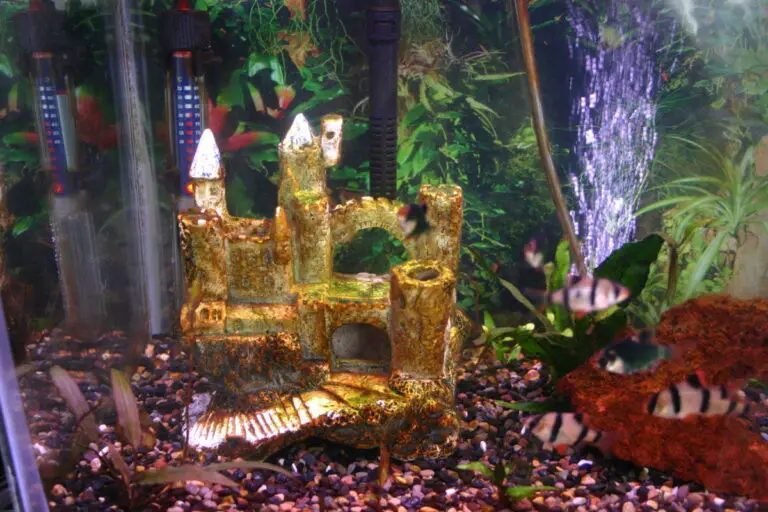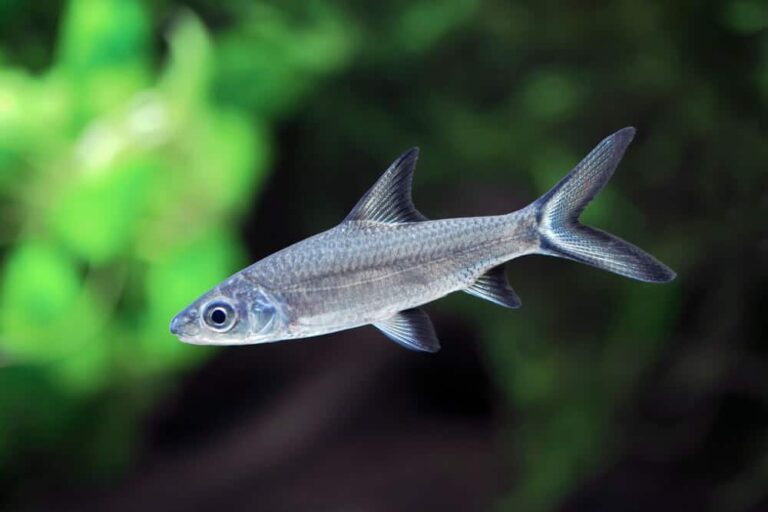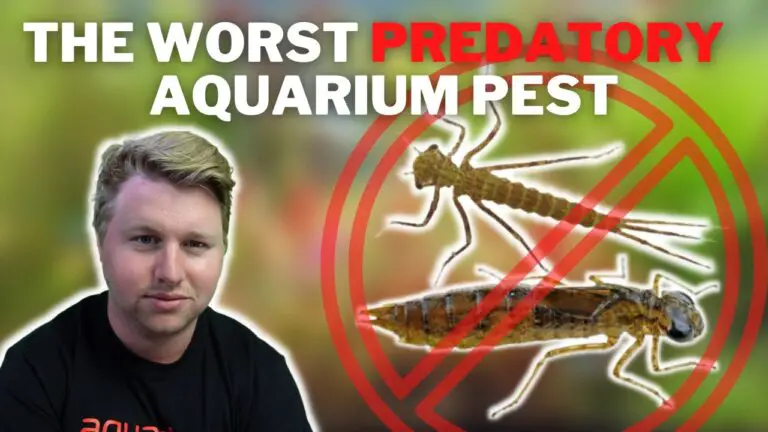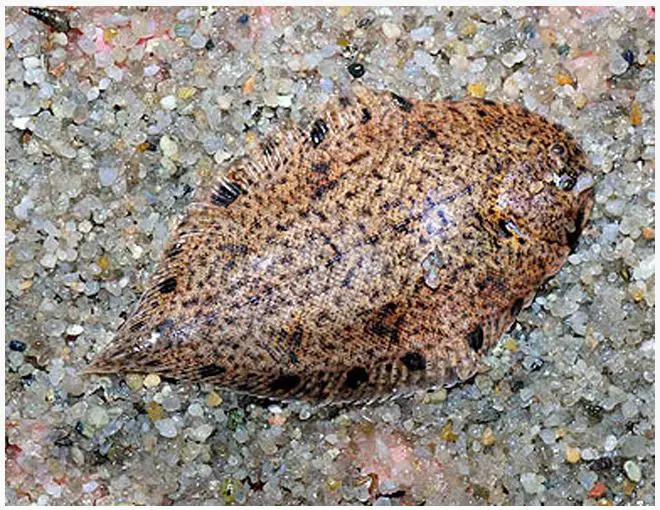White Slime in Fish Tank: Don’t Panic, It’s Probably Just Bacteria!
When you see white slime in your fish tank, it’s likely that you have a case of bacterial bloom.
This happens when there is an overgrowth of bacteria in the water. The good news is that this is usually not harmful to your fish.
However, it can be unsightly and may cause your fish to become stressed.
If you have a bacterial bloom, you’ll need to take steps to correct the water quality and reduce the amount of bacteria in the tank.
If you’ve ever seen white slime in your fish tank, you know it can be a bit of a mystery. What is this stuff? Is it harmful to my fish?
The short answer is that the white slime is most likely harmless bacteria.
This type of bacteria is actually quite common in aquariums and is often used by fishkeepers to help keep their tanks clean.
The bacteria feeds on organic matter and helps to break it down.
While the bacteria itself is not harmful to your fish, it can indicate that there’s something else going on in your tank that isn’t ideal.
For example, if there’s a lot of organic matter for the bacteria to feed on, it could be a sign that your tank isn’t being cleaned often enough.
Alternatively, if the water quality in your tank is poor, the bacteria could be proliferating out of control and causing problems for your fish.
If you see white slime in your fish tank, don’t panic! It’s probably nothing to worry about.
But if you’re concerned, take a closer look at your tank conditions and see if anything needs to be improved.
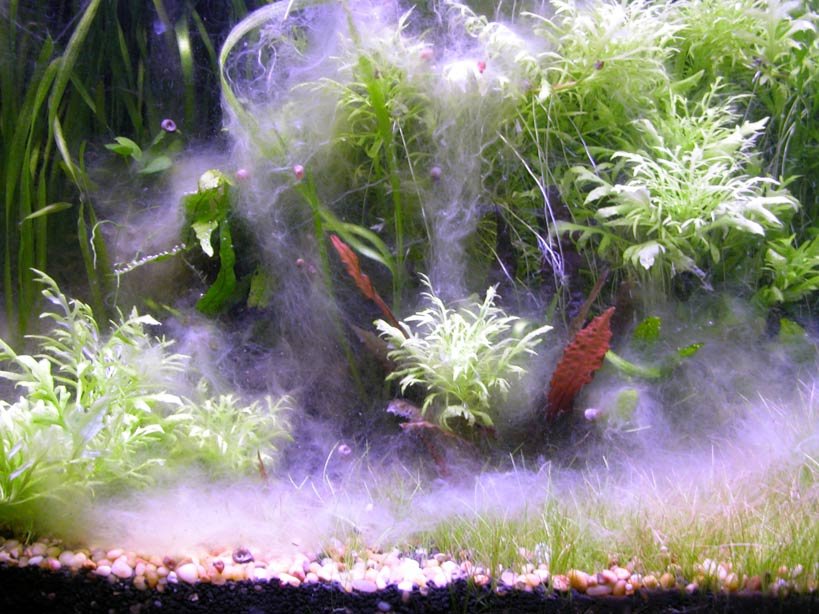
Credit: fishlab.com
How Do I Get Rid of White Slime in My Fish Tank?
If you’re noticing white slime in your fish tank, it’s most likely due to bacteria.
Bacteria are essential for a healthy aquarium, but too much of it can be harmful to your fish.
The good news is that there are a few things you can do to get rid of the excess bacteria and keep your tank clean and safe for your fish.
First, check your filter. If it’s not working properly, it could be causing the buildup of bacteria in your tank.
Make sure the filter is clean and functioning correctly.
You may also want to add an additional filter if you have a large tank or if you notice the problem persists even after cleaning the existing filter.
Next, vacuum the gravel in your tank on a regular basis.
This will help remove any build-up of debris and waste that could be contributing to the growth of bacteria.
Be sure to dispose of the vacuumed water properly; don’t just pour it back into the tank as this could further contaminate the water.
You should also perform regular water changes to help keep levels of toxins and waste down in the water.
A general rule of thumb is to change about 20-25% of the water every week or two weeks depending on how many fish you have in your tank.
When changing the water, be sure to use a dechlorinator to remove any harmful chemicals from tap water that could harm your fish.
Finally, consider adding some live plants to your aquarium as they can help absorb excess nutrients that contribute to bacterial growth.
There are many different types of plants available specifically for aquariums so talk to a pet store employee or do some research online before making a purchase.
How Do You Get Rid of White Slime?
If you’re dealing with white slime, there are a few things you can do to get rid of it. First, you’ll want to identify the source of the slime.
If it’s coming from your drains, it’s likely caused by buildup of soap scum, hair, and other debris.
You can remove this type of slime by cleaning your drains with a plunger or snake.
If the slime is coming from mold or mildew, you’ll need to clean the affected area with bleach or another disinfectant.
Once you’ve removed the slime, take steps to prevent it from returning by cleaning regularly and fixing any leaks that could be causing moisture buildup.
Is White Algae Harmful?
No definitive answer exists to this question as opinions on the matter vary greatly.
Some believe that white algae is helpful in controlling water clarity and preventing the growth of more harmful types of algae, while others believe that it can negatively impact water quality.
The jury is still out on this one, so further research is needed to determine whether or not white algae is harmful.
White Slime in Freshwater Aquarium
If you’ve noticed a white, slimy substance in your freshwater aquarium, it’s likely colonies of bacteria known as biofilm.
While not harmful in and of themselves, biofilms can indicate poor water quality and cause problems for your fish if left unchecked.
I’ll discuss what biofilms are, how to remove them, and how to prevent them from coming back.
Biofilms are composed of microscopic bacteria that adhere to surfaces in wet environments.
These surface-dwelling bacteria secrete a sticky substance that helps them attach to things like rocks, plants, and aquarium glass.
Over time, the biofilm will continue to grow and can become visible to the naked eye as a white or grayish slime.
While biofilms are not necessarily harmful, they can be indicative of poor water quality.
The presence of high levels of ammonia or nitrites in the water can encourage the growth of biofilms.
If left unchecked, these conditions can lead to serious health problems for your fish including respiratory distress and death.
The good news is that removing biofilms is relatively easy.
A simple vinegar solution will break down the slimy substance and allow you to wipe it away with a sponge or cloth.
Be sure to rinse the area well afterwards with clean water before returning your fish to their home.
To prevent biofilms from returning, it’s important to maintain good water quality in your aquarium.
Regularly test your water for ammonia and nitrites using an at-home testing kit (available at most pet stores).
If these levels are high, take action immediately by doing partial water changes and/or using a filtration system designed specifically for removing these toxins from the water.
White Slime in Fish Tank Filter
If you’ve ever noticed white slime in your fish tank filter, it’s most likely bacteria.
This type of bacteria is actually beneficial to your tank, as it helps to break down waste and keep the water clean.
However, if the bacteria population gets out of control, it can lead to problems such as cloudy water or even a fish die-off.
One way to control bacterial growth is to perform regular water changes and cleanings.
You should also make sure that you’re not overfeeding your fish, as this can lead to excess waste in the tank.
If you do notice an increase in white slime, you can try adding an air stone or other aeration device to help oxygenate the water and prevent the bacteria from taking over.
White Slime in New Fish Tank
If you’ve just set up a new fish tank, congratulations! A healthy fish tank is a beautiful thing to behold.
But there’s one thing that can spoil the look of your pristine aquarium and that’s white slime.
White slime is actually a type of algae, and it can quickly take over your tank if left unchecked.
Whilealgae are natural and even necessary in an ecosystem, too much of it can be harmful to your fish. So what causes white slime in a new fish tank?
There are a few things that can contribute:
Too much light – Algae need sunlight to grow, so if your tank is getting too much light, it could be encouraging the growth of algae.
This is especially true for tanks with glass tops, as the extra light from the sun can really boost algae growth.
Consider investing in a black out cover for your tank to cut down on excess light.
Nutrient imbalance – Another reason why white slime might be proliferating in your new fish tank is because of a nutrient imbalance.
If there are too many nutrients (nitrates and phosphates) in the water, this can also lead to an increase in algae growth.
Keeping an eye on your water quality and doing regular water changes can help keep nutrient levels under control and discourage algae growth.
Is White Algae Bad for Fish?
White algae, also known as diatoms, can be both good and bad for fish.
On the one hand, diatoms provide an important food source for many fish and other aquatic creatures.
They are also a major part of the ocean’s carbon cycle, helping to remove carbon dioxide from the water and convert it into oxygen.
However, large blooms of diatoms can sometimes occur in ponds and lakes, depleting oxygen levels and causing fish kills.
Some species of diatoms produce toxins that can harm or even kill fish.
Therefore, it is important to monitor pond and lake conditions carefully to ensure that diatom blooms do not get out of control.
What Causes White Algae in Fish Tank?
Is your fish tank plagued by a cloudy white film? If so, you’re not alone. Many aquarium owners deal with this frustrating problem at some point.
But what is this mystery substance? And more importantly, how do you get rid of it? The short answer is that the cloudy film is most likely algae.
Algae are simple plant-like organisms that thrive in moist environments. They’re often found in ponds, lakes, and of course, fish tanks. Algae can be beneficial to a certain extent.
They produce oxygen and help keep the water clean. But when they proliferate out of control, they can cause problems for both fish and humans alike.
Too much algae can block sunlight from reaching the plants in your aquarium which can stunt their growth.
It can also make the water murky and difficult to see through. In extreme cases, an algae bloom can deplete the oxygen levels in the water causing mass fish die-offs.
So how do you control algae growth in your fish tank?
The first step is to figure out what’s causing it in the first place.
There are several things that can contribute to an algae bloom including: too much light, overfeeding, poor filtration, and excessive organic matter in the water.
White Algae on Aquarium Glass
If you’ve ever noticed white algae on the glass of your aquarium, you’re not alone.
This type of algae is common in freshwater tanks and can be a challenge to remove.
But don’t despair – with a little elbow grease and some patience, you can get rid of that unsightly algae for good!
What Is White Algae?
White algae is a type of bacteria that thrives in moist environments. It’s often found in aquariums, where it can grow on the glass, plants, and other surfaces.
While it’s not harmful to fish or other aquatic creatures, it can be unsightly and difficult to remove once it gets started.
How Do I Get Rid of White Algae?
There are a few different methods you can use to get rid of white algae in your aquarium.
The best approach will depend on the size and severity of the problem.
For small patches ofalgae, you may be able to simply wipe it away with a soft cloth or sponge.
If thealgae is more widespread, you may need to take more drastic measures such as cleaning allof the surfaces in your tank or changing out the water completely.
No matter which methodyou choose, be sure to thoroughly clean any objects or decorations that have beenremoved from the tank before putting them back in, this will help prevent thenew growth from taking hold again.
In most cases, white algae problems can be prevented by maintaining propertank conditions.
Be sure to keep up with regular water changes (at least once amonth) and avoid overfeeding your fish.
Excess food can lead to high nitratelevels in the water which encourages bacterial growth like white algae.
Clear Slime in Betta Tank
Betta fish are unique and beautiful creatures that make great pets.
They are also known for being hardy fish, which means they can live in a variety of conditions.
This includes having clear slime in their tank. Clear slime is a normal and healthy thing for betta fish to have.
It’s simply their mucus layer that helps protect them from diseases and parasites.
The slime also contains toxins that can kill other organisms, such as bacteria.
So, if you see clear slime in your betta’s tank, don’t be alarmed – it’s perfectly normal!
What Eats White Algae?
White algae, also known as diatoms, are an important part of the aquatic food chain.
These microscopic organisms are eaten by a variety of creatures including fish, crustaceans, and mollusks.
In turn, these animals are consumed by larger predators such as seals, penguins, and humans.
Diatoms are single-celled algae that have a hard shell made of silica.
They are found in freshwater and marine environments all over the world.
Diatoms photo-synthesize to produce their own food using sunlight just like other plants do.
When they die, their shells sink to the bottom of the water where they provide an important source of food for bottom-dwelling creatures.
White algae play an important role in the global carbon cycle by sequestering carbon dioxide from the atmosphere into their shells which eventually end up in the ocean floor sediments.
It is estimated that diatoms account for approximately 20% of the total oceanic primary production (the amount of new organic matter created each year).
Conclusion
If you have white slime in your fish tank, don’t worry – it’s probably just bacteria.
Bacteria are essential for a healthy aquarium, and they often form a slimy layer on the glass or decorations.
This bacterial film is usually harmless to fish and can even help to keep the water clean by trapping debris and waste.
However, if the slime starts to grow out of control it can become a problem.
Too much bacteria can cause water quality issues and make your fish sick, so it’s important to keep an eye on the growth of bacterial colonies in your tank.

